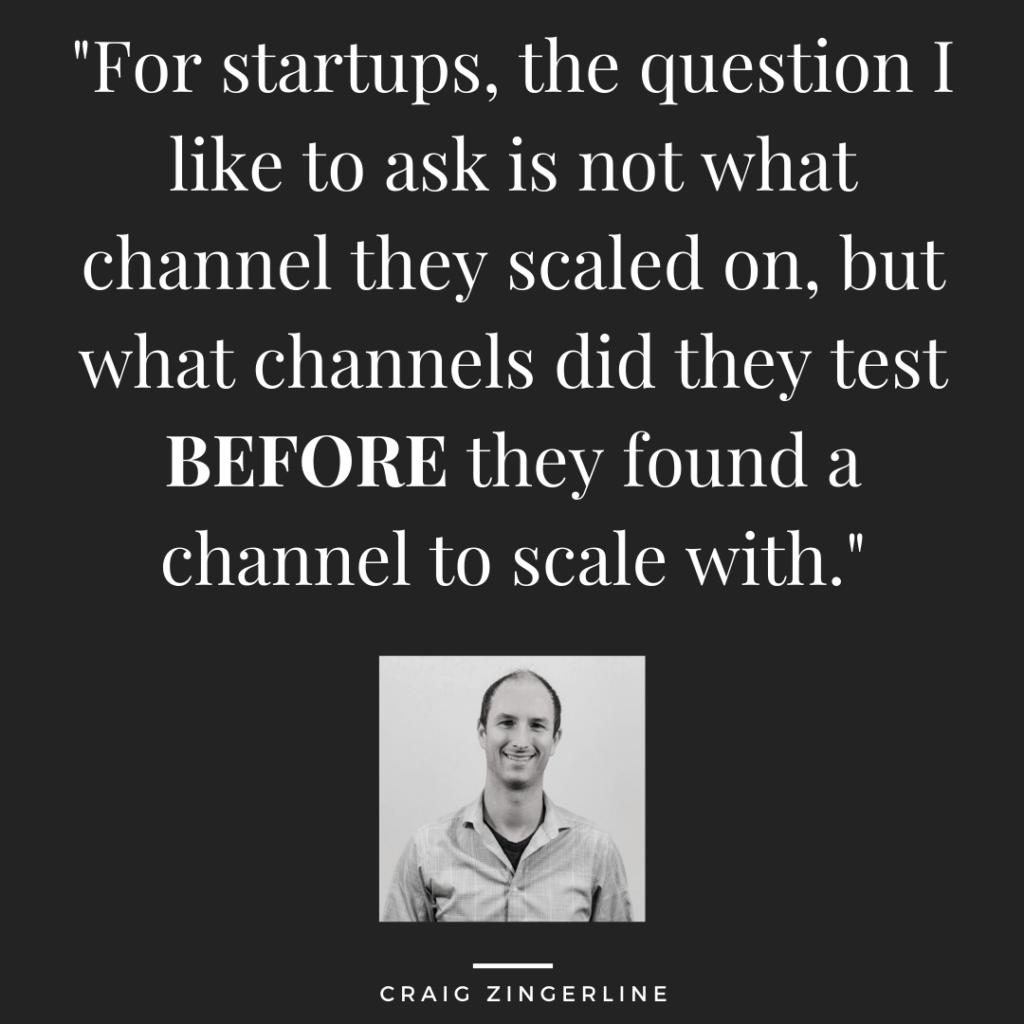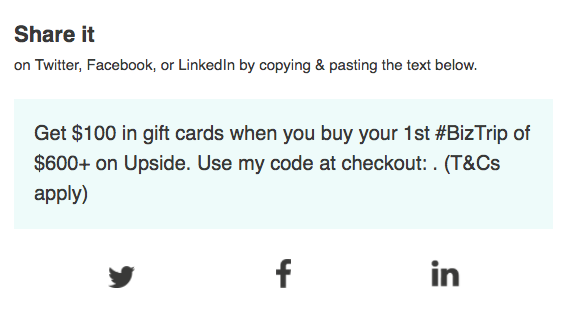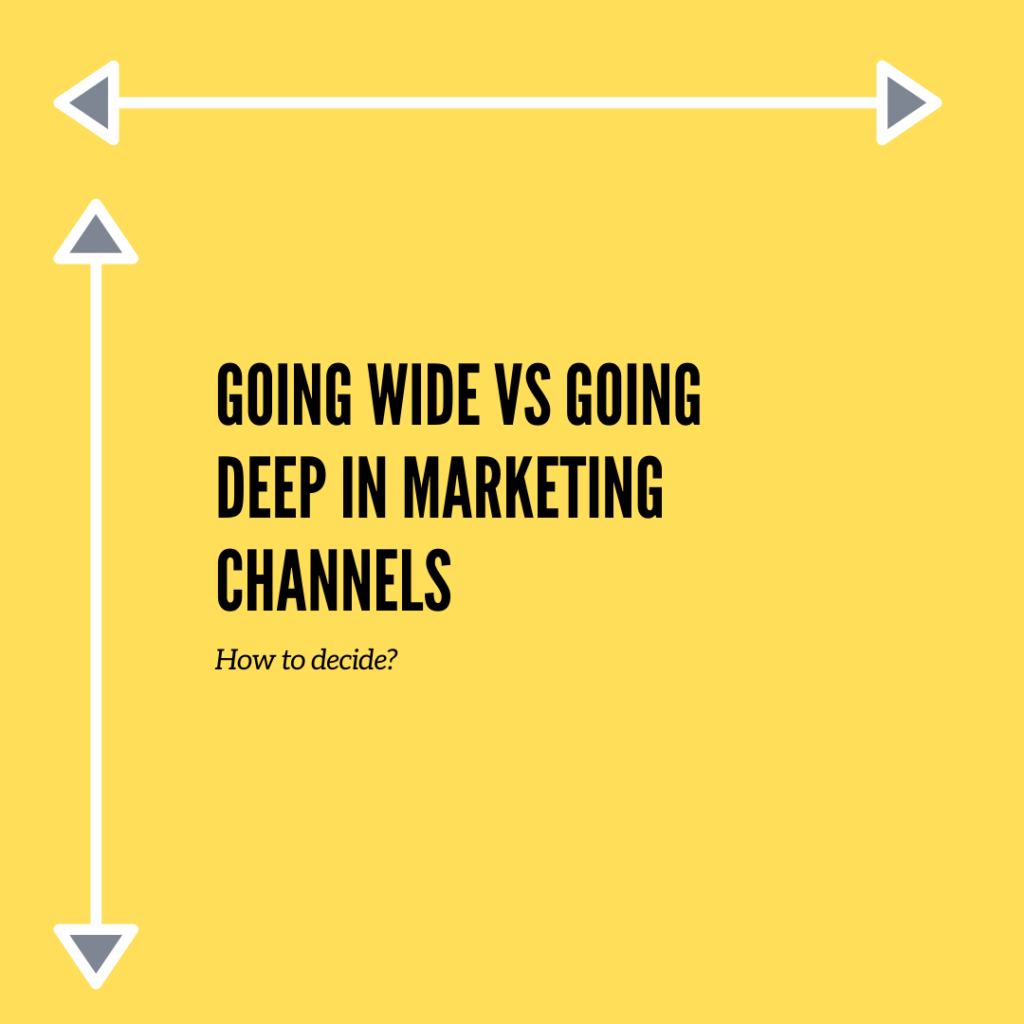A common theme I’m seeing in the growth marketing and digital marketing space is the question of when one should go wide versus deep in marketing channels. There are a large number of folks talking about and giving advice on this topic. I won’t mention names, but unfortunately I believe much of this information is wrong. But first, let’s start by some definitions.
By going wide, you’ll likely be testing multiple different marketing channels using a variety of campaigns and creative types. You won’t focus on a single channel and instead will be looking at a wide variety of channels and placements to find a signal.
By going deep, you’ll be doubling down on a single channel (or perhaps two channels) and focusing your energy and efforts there until you hit some level of scale.
Both strategies have a time and a place in the lifecycle of your marketing efforts, but almost everything I’m reading online states the importance of going deep over going wide. In addition, I see a lot of content talking about how Startup X or Startup Y got their first 100 or 1000 customers, often by relentlessly focusing on one channel.
While I absolutely love reading these stories, what they most commonly leave out is the months or more likely – years – that the founders went through before they found channel fit, and exploited a single channel to scale.

A story of finding “the channel”
Let me share a real example of one of my companies. When I ran Growth & Marketing at Upside Business Travel we initially were trying to scale our reach and growth primarily through Facebook Ads. Our CAC was high (but not above what other startups in our space were seeing) and our conversions were ok, but our CAC to LTV never quite worked out the way we needed. We found that we had to pump more and more money into the paid channels than we wanted, and that doing so was constraining our growth. We next tried multiple different channels – organic SEO, targeted SEM, lead magnets, other paid channels [Twitter, Reddit, LinkedIn, etc.] only to bump up against the same CAC to LTV issue. From there we build a whole different lead generation strategy, focused on activation, and continued to improve the product.
Dozens and dozens of experiments were run.
Eventually we honed in on some ideas around referrals, and specifically, using travel bloggers and travel influencers to leverage their reach to find relevant, highly targeted potential customers. Here’s an example of a price driven promo that an influencer used:

You probably can’t skip to the end
Over a period of a few months we continued to hone in on our model with influencers, and we moved away from monetary and into other forms of incentivized 1st purchase based referral loops. We struck gold in terms of new reach and new customers.
Notice what we had to do here. We burned time and money on tons of different channels, finally determining a single channel that became the focal point of our growth. However – one cannot simply just choose an end result like this. Had we stuck with Facebook, we’d likely have run low on cash. If we thought SEO was our main game, we’d have grown amazingly…slowly! We tried, tried again, and tried some more in all sorts of different ways to find our signals, and then we doubled down.
So, how do you know when to go wide versus go deep?
I’d approach this by quantifying your model a bit. And make a case for either scenario.
The case to double down and go deep
If you have found that more effort and/or money into a channel results in a continued increase in customers, and an acceleration of customers week over week – then you probably have channel-product fit, and you can continue to double down.
The case to go wider and keep searching
If you have found that you just can’t seem to get the signals you need in terms of leads/conversions/customers – then you probably need to keep searching. This may mean:
- Running more experiments in the channels you are marketing in
- Giving campaigns a longer lifespan in these channels you are marketing in
- Updating creative, messaging, bid types, budgets until you prove or disprove the economics of the channel
- Spending more time in the channels you are marketing in to let campaigns live longer and for the algorithms to continue improving on your model
- Working in additional new channels using small budgets to measure the initial reach, clicks, and general engagement
Assuming you find some channel fit after some amount of time in steps 1-5 above, you can then move to scale. Congratulations – you can now go get a bunch of customers!
But be prepared for this phase to last weeks, months, possibly even a year or more before you really find channel fit. Once you do, go ahead and write that post about how you acquired your first 1000 customers. But until then, keep on trying!
